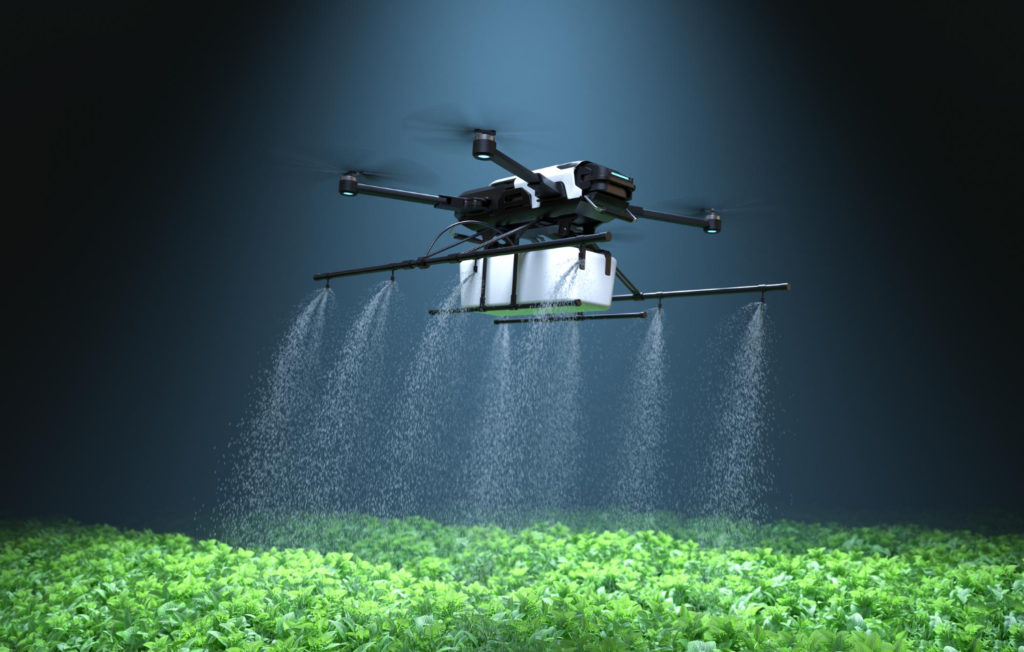Introduction
Agriculture is one of the most vital sectors of the global economy, providing food, income, and livelihoods for billions of people. However, modern agriculture faces many challenges, such as climate change, resource depletion, and food security. These challenges require innovative solutions that can enhance the productivity, efficiency, and sustainability of farming practices. Artificial intelligence (AI) is one of the most promising technologies that can offer such solutions. AI-powered solutions can help farmers optimize resource management, minimize environmental impact, improve crop health, and gain data-driven insights. In this article, we will explore how AI can power sustainable agriculture, and what are the opportunities and challenges for its adoption and implementation.

The Current State of Agriculture
Agriculture is a complex and dynamic system that involves multiple factors, such as soil, water, weather, crops, pests, diseases, markets, and policies. These factors interact in various ways, creating challenges and opportunities for farmers and other stakeholders. Some of the major challenges facing modern agriculture are:
- Climate change: Climate change is affecting the patterns and variability of temperature, precipitation, and extreme weather events, such as droughts, floods, and heat waves. These changes can have negative impacts on crop yields, quality, and resilience, as well as increase the risks of pests and diseases.
- Resource depletion: Agriculture consumes a large amount of natural resources, such as land, water, and energy. According to the Food and Agriculture Organization (FAO), agriculture accounts for about 70% of global freshwater use, and 30% of global energy use. However, these resources are finite and degrading, posing challenges for meeting the growing demand for food and other agricultural products.
- Food security: Food security is defined as the availability, accessibility, and utilization of sufficient, safe, and nutritious food for all people at all times. However, food security is threatened by various factors, such as population growth, urbanization, poverty, inequality, conflict, and trade. According to the FAO, about 690 million people were undernourished in 2019, and this number could increase due to the COVID-19 pandemic and its socio-economic impacts.
Traditional farming practices, such as monoculture, intensive tillage, and excessive use of chemical inputs, have contributed to some of these challenges, as they can degrade soil quality, reduce biodiversity, and pollute water and air. Moreover, traditional farming practices rely heavily on human labor and intuition, which can be inefficient, inaccurate, and inconsistent. Therefore, there is a need for innovative solutions that can address the challenges facing modern agriculture, and enhance its productivity, efficiency, and sustainability.
Understanding AI in Agriculture
AI is a branch of computer science that aims to create machines and systems that can perform tasks that normally require human intelligence, such as learning, reasoning, and decision-making. AI-powered solutions can leverage various techniques, such as machine learning, computer vision, natural language processing, and robotics, to process large amounts of data, extract meaningful patterns, and generate optimal solutions.
AI-powered solutions can be applied to various aspects of agriculture, such as:
- Precision agriculture: Precision agriculture is an approach that uses data and technology to tailor farming practices to the specific needs and conditions of each crop, field, and farm. AI-powered solutions can help farmers collect and analyze data from various sources, such as sensors, drones, satellites, and weather stations, and provide real-time feedback and recommendations on optimal inputs, such as seeds, fertilizers, pesticides, and irrigation.
- Crop monitoring: Crop monitoring is the process of observing and measuring the growth, health, and quality of crops throughout the crop cycle. AI-powered solutions can help farmers monitor their crops remotely and automatically, using images and videos captured by cameras, drones, and satellites, and applying computer vision and machine learning algorithms to detect and classify crop features, such as plant height, leaf area, chlorophyll content, biomass, yield, and stress indicators.
- Predictive analytics: Predictive analytics is the process of using data and statistical models to forecast future outcomes and trends. AI-powered solutions can help farmers predict various aspects of their crops and farms, such as crop yield, crop quality, crop demand, crop price, and crop risk, using historical and current data, and applying machine learning and deep learning techniques to generate accurate and reliable predictions.
AI-powered solutions can offer various benefits for integrating AI into agricultural practices, such as:
- Improving resource management: AI-powered solutions can help farmers optimize the use of natural resources, such as land, water, and energy, by providing data-driven guidance on when, where, and how much to apply these inputs, based on the specific needs and conditions of each crop, field, and farm. This can reduce resource waste, lower production costs, and increase resource efficiency.
- Minimizing environmental impact: AI-powered solutions can help farmers minimize the environmental impact of their farming practices, by reducing the use of chemical inputs, such as fertilizers, pesticides, and herbicides, and replacing them with more eco-friendly alternatives, such as biological control agents, organic amendments, and cover crops. This can reduce soil erosion, water pollution, air pollution, and greenhouse gas emissions, and enhance soil health, water quality, and biodiversity.
- Enhancing crop health and resilience: AI-powered solutions can help farmers enhance the health and resilience of their crops, by providing early detection and diagnosis of pests and diseases, and recommending timely and effective interventions, such as crop rotation, intercropping, and integrated pest management. This can reduce crop losses, improve crop quality, and increase crop yields.
Enhancing Sustainability with AI
Sustainability is a concept that refers to the ability to meet the needs of the present without compromising the ability of future generations to meet their own needs. Sustainability encompasses three dimensions: economic, social, and environmental. Sustainable agriculture is an approach that aims to balance these three dimensions, by producing food and other agricultural products in a way that is profitable, equitable, and ecologically sound.

AI can play a key role in enhancing sustainability in agriculture, by helping farmers achieve the following objectives:
- Improving resource management: AI can help farmers improve resource management, by providing data-driven optimization of inputs, such as seeds, fertilizers, pesticides, and irrigation, based on the specific needs and conditions of each crop, field, and farm. This can reduce resource waste, lower production costs, and increase resource efficiency.
- Minimizing environmental impact: AI can help farmers minimize environmental impact, by reducing the use of chemical inputs, such as fertilizers, pesticides, and herbicides, and replacing them with more eco-friendly alternatives, such as biological control agents, organic amendments, and cover crops. This can reduce soil erosion, water pollution, air pollution, and greenhouse gas emissions, and enhance soil health, water quality, and biodiversity.
- Enhancing crop health and resilience: AI can help farmers enhance crop health and resilience, by providing early detection and diagnosis of pests and diseases, and recommending timely and effective interventions, such as crop rotation, intercropping, and integrated pest management. This can reduce crop losses, improve crop quality, and increase crop yields.
Some examples of AI-powered solutions that can enhance sustainability in agriculture are:
- CropIn: CropIn is an AI-based platform that provides smart farming solutions for various crops, such as cereals, pulses, oilseeds, fruits, and vegetables. CropIn uses satellite imagery, weather data, and soil data to provide farmers with real-time insights and recommendations on crop growth, crop health, crop yield, and crop risk. CropIn also enables farmers to access market information, financial services, and insurance schemes, and connects them with buyers, suppliers, and experts.
- FarmBeats: FarmBeats is an AI-based platform that provides precision agriculture solutions for various crops, such as corn, soybean, wheat, and cotton. FarmBeats uses sensors, drones, and satellites to collect and analyze data on soil moisture, soil temperature, soil pH, soil nutrients, crop growth, and crop stress. FarmBeats also uses machine learning and cloud computing to provide farmers with actionable insights and recommendations on optimal inputs, such as seeds, fertilizers, pesticides, and irrigation.
- Plantix: Plantix is an AI-based app that provides crop monitoring and diagnosis solutions for various crops, such as rice, wheat, maize, potato, and tomato. Plantix uses computer vision and deep learning to identify and classify crop features, such as plant height, leaf area, chlorophyll content, biomass, yield, and stress indicators, using images captured by smartphone cameras. Plantix also provides farmers with information and advice on pest and disease management, crop protection, and crop nutrition.
Empowering Farmers with Data-driven Insights
Data is one of the most valuable assets in the digital age, as it can provide insights, knowledge, and wisdom for various domains and applications. Data-driven insights can empower farmers to make informed decisions, improve their performance, and enhance their competitiveness.
AI can help farmers access and utilize data-driven insights, by helping them:
- Analyze large-scale agricultural data: AI can help farmers analyze large-scale agricultural data, such as satellite imagery, weather data, soil data, crop data, market data, and policy data, and extract meaningful patterns, trends, and correlations, using machine learning, computer vision, natural language processing, and data mining techniques. This can help farmers understand the current state and future scenarios of their crops and farms, and identify opportunities and challenges.
- Provide actionable insights: AI can help farmers provide actionable insights, such as optimal inputs, best practices, and recommendations, based on the analysis of large-scale agricultural data, and applying optimization, simulation, and decision support techniques. This can help farmers optimize their farming practices, enhance them.AI can also assist farmers in monitoring crop health, detecting diseases, pests, and weeds early on, and providing timely interventions to prevent crop losses. By leveraging AI technology, farmers can make informed decisions, improve productivity, reduce costs, and ultimately increase their profitability.
Overcoming Challenges and Barriers
AI-powered solutions can offer many benefits for sustainable agriculture, but they also face many challenges and barriers for their adoption and implementation. Some of these challenges and barriers are:
- Privacy, data ownership, and access: AI-powered solutions rely on large amounts of data, which can raise concerns about privacy, data ownership, and access. Farmers may be reluctant to share their data with third parties, such as technology providers, researchers, or governments, due to the fear of losing control, ownership, or competitive advantage. Moreover, farmers may face difficulties in accessing or using data from other sources, such as satellites, drones, or sensors, due to the lack of infrastructure, connectivity, or interoperability.
- Inclusivity and accessibility: AI-powered solutions may not be inclusive or accessible for all farmers, especially small-scale farmers, who may lack the resources, skills, or awareness to adopt or use them. Small-scale farmers may face challenges such as high costs, low literacy, language barriers, cultural differences, or social norms, that may prevent them from accessing or benefiting from AI-powered solutions. Moreover, AI-powered solutions may not be tailored or adapted to the specific needs and contexts of small-scale farmers, such as crop diversity, local knowledge, or indigenous practices.
- Technical and infrastructural barriers: AI-powered solutions may encounter technical and infrastructural barriers, such as data quality, data availability, data security, data integration, data analysis, data interpretation, or data communication, that may affect their performance, reliability, or usability. Moreover, AI-powered solutions may require adequate infrastructure, such as hardware, software, network, power, or maintenance, that may not be available or affordable for all farmers or regions.
To overcome these challenges and barriers, various stakeholders, such as farmers, technology providers, researchers, policymakers, and civil society, need to collaborate and cooperate, and adopt the following approaches:
- Addressing concerns about privacy, data ownership, and access: Stakeholders need to address the concerns about privacy, data ownership, and access, by establishing clear and transparent policies, regulations, and agreements, that respect and protect the rights and interests of farmers and other data providers and users. Moreover, stakeholders need to ensure that farmers have the ability and opportunity to access and use data from various sources, and that data is shared and exchanged in a fair, ethical, and secure manner.
- Ensuring inclusivity and accessibility of AI-powered solutions: Stakeholders need to ensure that AI-powered solutions are inclusive and accessible for all farmers, especially small-scale farmers, by reducing the costs, improving the literacy, overcoming the language barriers, respecting the cultural differences, and empowering the social norms, that may hinder their adoption or use. Moreover, stakeholders need to ensure that AI-powered solutions are tailored and adapted to the specific needs and contexts of small-scale farmers, such as crop diversity, local knowledge, or indigenous practices.
- Collaborative approaches to overcoming technical and infrastructural barriers: Stakeholders need to adopt collaborative approaches to overcoming technical and infrastructural barriers, such as improving the data quality, increasing the data availability, enhancing the data security, facilitating the data integration, advancing the data analysis, simplifying the data interpretation, or optimizing the data communication, that may affect the performance, reliability, or usability of AI-powered solutions. Moreover, stakeholders need to provide adequate infrastructure, such as hardware, software, network, power, or maintenance, that can support the deployment and operation of AI-powered solutions.
Future Directions and Opportunities
AI-powered solutions have the potential to revolutionize farming practices and food systems and create new opportunities for sustainable agriculture. Some of the emerging trends and advancements in AI for sustainable agriculture are:
- AI for climate-smart agriculture: AI can help farmers adapt to and mitigate the effects of climate change, by providing climate-smart solutions, such as weather forecasting, crop modeling, climate risk assessment, and climate-resilient cropping systems. AI can also help farmers reduce their greenhouse gas emissions, by optimizing their inputs, such as fertilizers, pesticides, and irrigation, and promoting low-carbon practices, such as agroforestry, conservation agriculture, and organic farming.
- AI for circular agriculture: AI can help farmers transition to a circular economy, by providing circular solutions, such as waste management, resource recovery, and value addition. AI can help farmers reduce their waste generation, by optimizing their production, processing, and distribution processes, and minimizing their post-harvest losses. AI can also help farmers recover and reuse their waste, by converting it into valuable products, such as biogas, biofertilizers, biopesticides, and bioplastics.
- AI for smart food systems: AI can help farmers participate in and benefit from smart food systems, by providing smart solutions, such as traceability, quality assurance, and market access. AI can help farmers track and monitor their products throughout the supply chain, by using technologies such as blockchain, RFID, and QR codes, and ensuring their safety, quality, and authenticity. AI can also help farmers access and connect with various markets, such as local, regional, national, and global markets, and consumers, such as retailers, wholesalers, and end-users, and enhancing their income, profitability, and competitiveness.
AI-powered solutions can create new opportunities for interdisciplinary collaboration and innovation, by bringing together various stakeholders, such as farmers, technology providers, researchers, policymakers, and civil society, and enabling them to share their data, knowledge, and expertise, and co-create solutions that are relevant, appropriate, and effective for sustainable agriculture.
Conclusion
In this article, we have explored how AI can power sustainable agriculture, and what are the benefits, challenges, and opportunities for its adoption and implementation. We have discussed how AI can help farmers improve resource management, minimize environmental impact, enhance crop health and resilience, and gain data-driven insights. We have also discussed how AI can help farmers achieve sustainability objectives, such as climate-smart agriculture, circular agriculture, and smart food systems. We have also highlighted some of the emerging trends and advancements in AI for sustainable agriculture, and the potential for interdisciplinary collaboration and innovation.
AI-powered solutions can offer a transformative potential for sustainable agriculture, by enabling farmers to produce more with less, and better with less. However, AI-powered solutions are not a silver bullet, and they require careful and responsible design, development, and deployment, that consider the ethical, social, and environmental implications, and respect and protect the rights and interests of farmers and other stakeholders. Therefore, we call for a collective and collaborative effort from all stakeholders, to embrace AI-powered solutions, and drive positive change in the agricultural sector.
